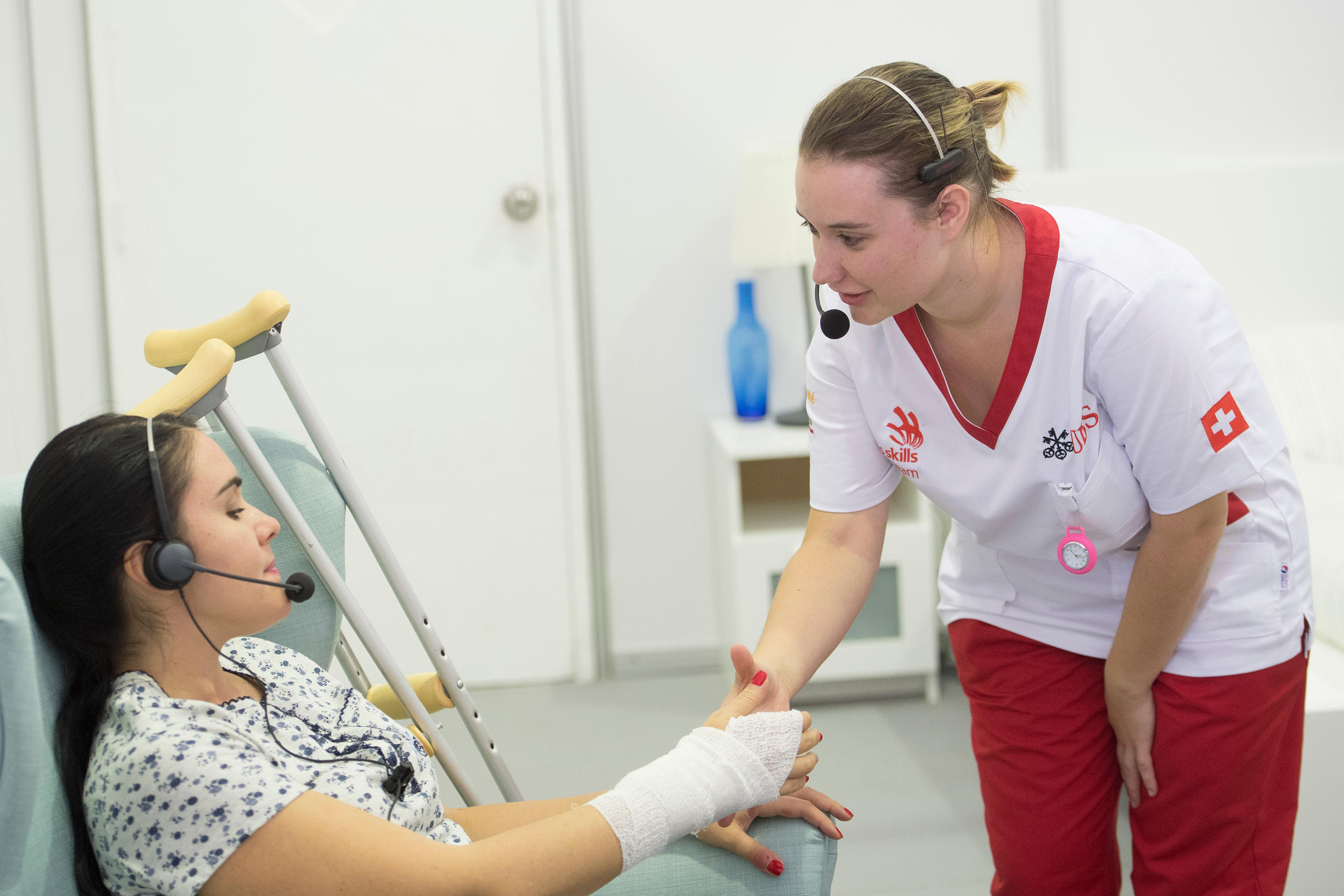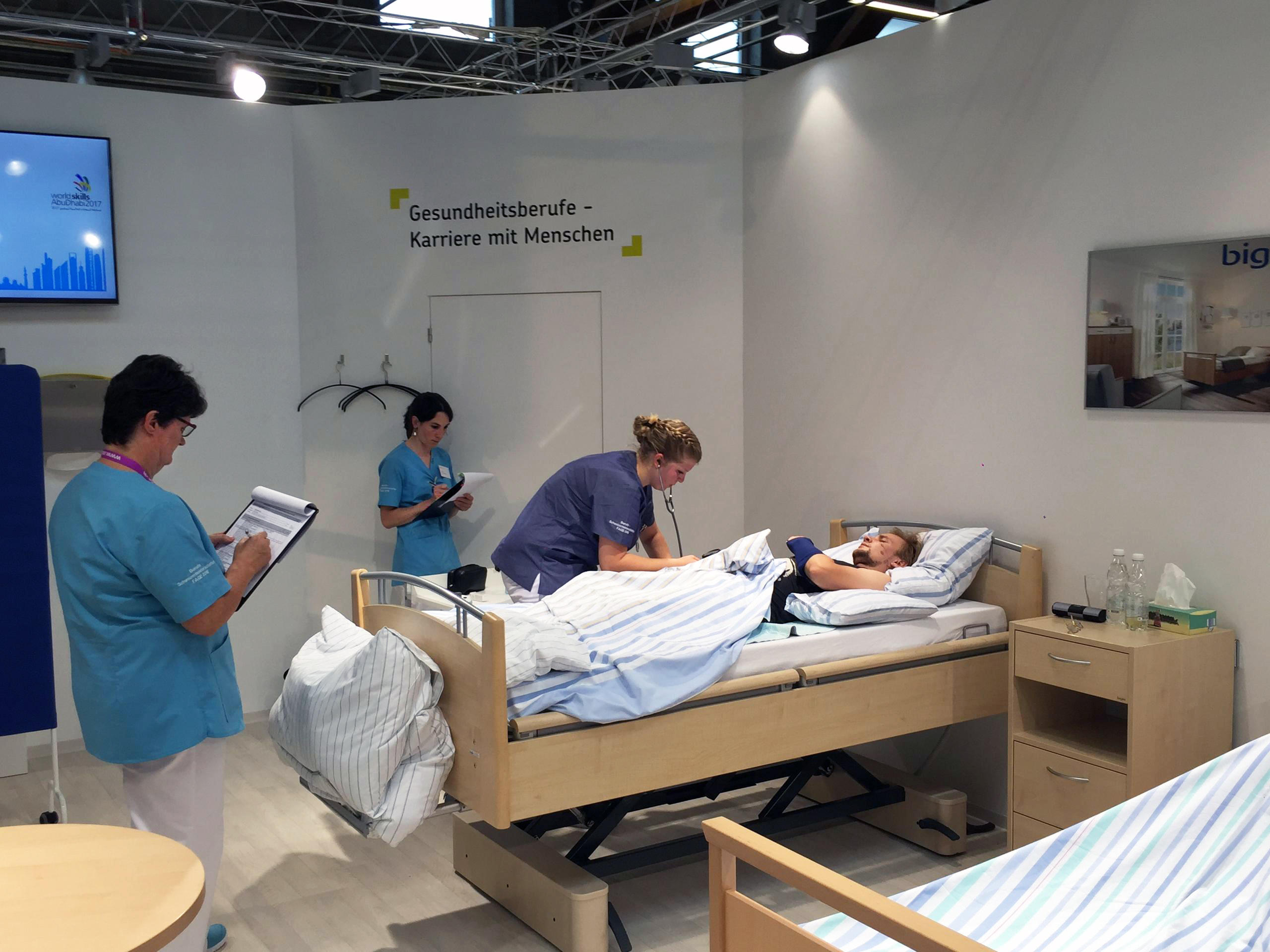
On-the-job training: a Swiss calling card

2017 was an exceptional year for the Swiss vocational model on the world stage. So what sets the country’s job training apart from the competition? A young woman who took home the top prize at an international skills contest provides some insights.
“Some people from other countries trained for two years just for this competition,” says Irina Tuor, a young woman from eastern Switzerland, of the WorldSkills contest where she recently won a gold medal in her field. Tuor met competitors from China and Brazil, for example, who were laser-focused on learning and re-learning material they might be asked to present at WorldSkills.
But the Swiss team of 38 candidates in 36 different fields continued to work in their everyday apprenticeships and jobs right up until the competition. It paid off: in the end, Switzerland came in as the best European country in the competition in October out of 59 nations represented. The Swiss team was second overall, behind China, and won 20 medals.
That focus on on-the-job training is a hallmark of Switzerland’s vocational training system, where 70% of young people go on to an apprenticeship after compulsory schooling. Tuor is at the top of her field as a care worker – a person who sees to the everyday needs of patients in hospitals and nursing homes. It’s one of more than 400 fields available to Swiss apprentices when they apply for vocational training.

Options and international interest
After speaking with WorldSkills delegates from other countries, Tuor concluded that another advantage of the Swiss apprenticeship system is the day-to-day variety it offers students. Most are only in school for a few days at a time before heading back to their jobs.
“I think that the way it’s built up makes it interesting for people to learn,” she says. “I heard that other countries have a lot more block school and block work schedules.”
“If someone doesn’t like to go to school, they know it’s just a few days and then they’ll be at work again.”
Pressure to attend university is increasing in Switzerland, which some argue have overshadowed the attractiveness of the apprenticeship system for students. Still, it can provide an attractive alternative for those who don’t have the desire to pursue more academic schooling. The Swiss model is consistently examined by other countries – such as, recently, a delegation from Washington State in the US – because it, somewhat uniquely, also allows apprentices to earn higher degrees and switch career paths through the Universities of Applied Sciences.
Mauro Dell’Ambrogio, State Secretary for Education, Research and Innovation, says 2017 was a year of heightened international interest in the Swiss vocational training model.
“More and more, education and research are at the centre of international awareness about Switzerland,” he said at a gathering of representatives from the Swissnex science and innovation hubs around the world.
“We are working to portray an image of innovation and education abroad.”
However, Dell’Ambrogio cautioned against thinking that the Swiss vocational training model might be just copied in other countries, since those countries’ education systems are likely to be set up differently than Switzerland’s. Instead, he said, each country needs to carefully consider and adapt appropriate aspects of the Swiss model to their own needs to be successful.
Endurance and pressure

More
When caring for patients gets competitive
At the WorldSkills contest, Tuor was up against contestants from countries with vastly different vocational training models. But they were all judged in the same way, tasked with tending to “patients” (hired actors) on a stage set up to look like a hospital room. Three evaluators followed them around, watching and grading every move.
“People expected me to get a medal because we had never gotten one before in this field, and that put a bit of pressure on.” And, she says, there was pressure on the Swiss team to repeat its prior successes.
At a certain point, it all became too much.
“I think I was constantly crying on the third day of the competition because I felt like I couldn’t go on,” Tuor recalls. “In the end I didn’t believe I would win a medal anymore, I felt I was emotionally and mentally not strong enough.”
But after four days of competition, Tuor emerged the winner.
“I really thought it wouldn’t be enough, but you hold out hope until the very last second.”
“Then you come back and the team celebrates you. That was really the nicest moment.”

In compliance with the JTI standards
More: SWI swissinfo.ch certified by the Journalism Trust Initiative
















![The four-metre-long painting "Sonntag der Bergbauern" [Sunday of the Mountain Farmers, 1923-24/26] had to be removed by a crane from the German Chancellery in Berlin for the exhibition in Bern.](https://www.swissinfo.ch/content/wp-content/uploads/sites/13/2025/12/01_Pressebild_KirchnerxKirchner.jpg?ver=a45b19f3)











You can find an overview of ongoing debates with our journalists here . Please join us!
If you want to start a conversation about a topic raised in this article or want to report factual errors, email us at english@swissinfo.ch.